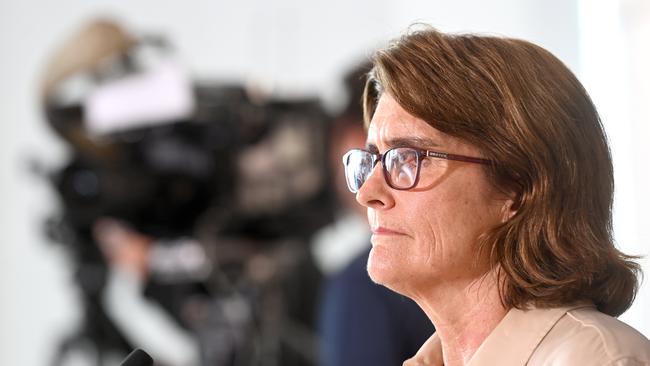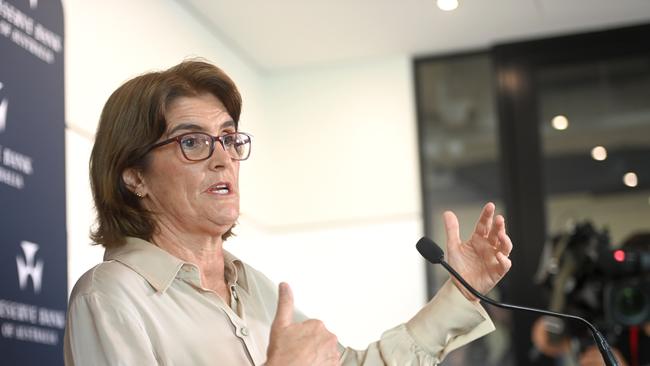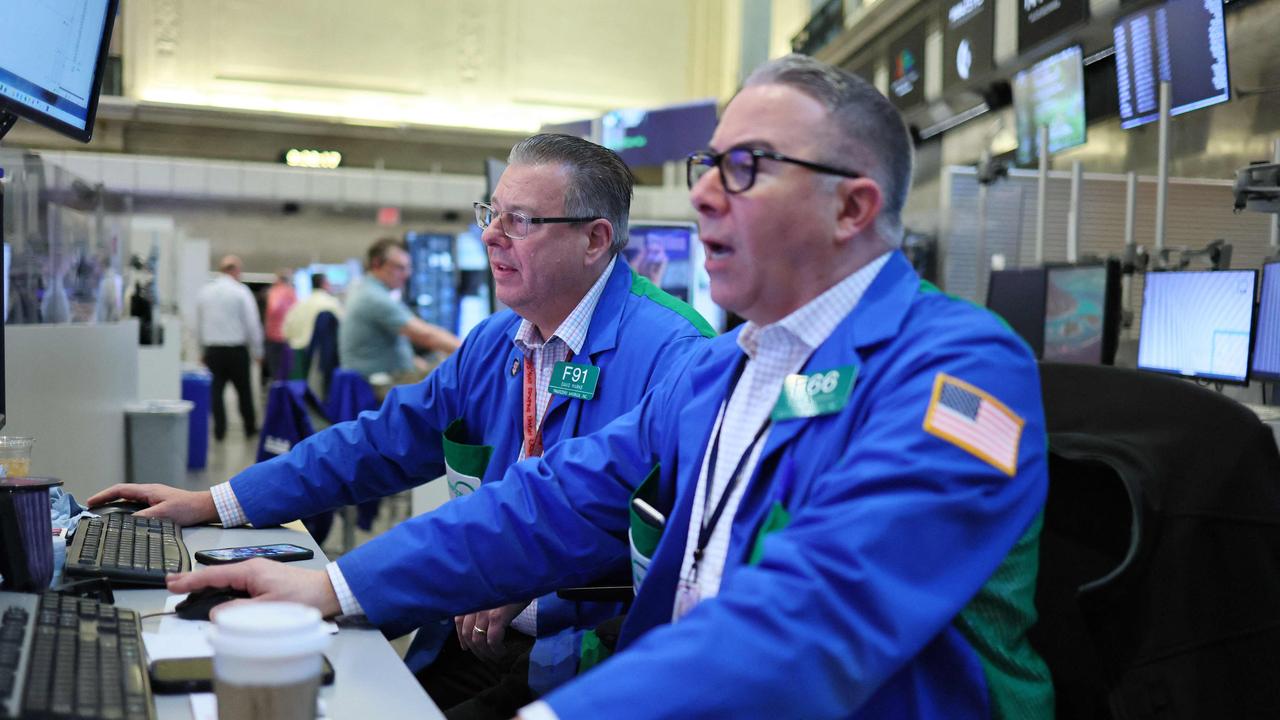RBA has some breathing room on rates as Fed stays on hold
A still-dovish US Federal Reserve gives Australia’s Reserve Bank some leeway at its meeting next week, where the board is likely to acknowledge disinflation has stalled.

A still-dovish Fed gives the RBA some breathing room at its meeting next week but the board is likely to acknowledge that disinflation has stalled, even though most expect it to keep rates on hold.
A Bloomberg survey of economists on Friday found 23 of 24 now expect the RBA to keep its cash rate target at 4.35 per cent. Capital Economics is the only forecaster predicting a rate hike this month.
Of the 24 economists surveyed by Bloomberg, 12 expect the RBA to cut to 4.1 per cent by November and 7 expect it to cut to 3.85 per cent by mid-2025.
Rabobank is the most bearish forecaster in the survey, predicting hikes in August and November.
Market pricing tells a far less dovish story, although it has cooled somewhat in recent days.
Overnight indexed swaps show peak rate hike pricing of 8.8 basis points by August, implying a 35 per cent chance of the RBA pulling the trigger on a standard-sized rate hike of 25 basis points.

On Monday the Overnight Indexed Swap market had priced in 11 basis points of hikes by September.
Moreover, a 25 basis points rate cut isn’t fully priced in by the OIS market until September 2025.
If the Fed had indicated that the next move in US rates could be an increase, the Aussie dollar may have fallen sharply, increasing the price of imported goods, which could have increased calls for another rate hike from the RBA as the “last mile” of disinflation proves difficult.
But that wasn’t the case as the US dollar retreated along with US Treasury yields.
Further restraining the US dollar, the Japanese yen soared on suspected intervention by the Bank of Japan as its loose monetary policy led the yen to hit a three-decade low against the Greenback.
The Aussie dollar has been relatively steady on a trade weighted basis for the past three years.
In his press statement, Fed chair Jay Powell acknowledged a “lack of further progress” toward the 2 per cent inflation target in recent months and reiterated that the Fed doesn’t think it will be appropriate to cut rates until inflation is moving sustainably toward the target. But he pushed back on speculation of an interest rate hike, saying it was “unlikely” to be the next move by the Fed.
Westpac chief economist Luci Ellis expects the RBA to keep rates on hold until inflation falls further.
With the inflation surprise in the March quarter and some further upside possible in the June quarter, she says the outlook for rate cuts in Australia has been pushed out as it has in the US.
But while a scenario necessitating a rate hike is “not impossible”, it’s “unlikely” and could only take shape later in the year, according to Dr Ellis, a former RBA assistant governor.
She pushes back on the idea that the RBA needs to hike again simply because it has done less than the Fed.
In her view the US is something of an “outlier” among peers. US domestic demand growth is stronger, US inflation is stickier, and US consumption per capita is consistently rising.
Both the US and Australia have tight labour markets, but Australia’s jobs market is set to loosen.
“More broadly, the two countries are facing very different fiscal contexts, which helps explain why domestic demand growth remains strong in the United States and weak in Australia,” she said.
“Nowhere else in the advanced world is the discourse so aghast at the idea that fiscal policy might add to demand, thereby slowing the hoped-for disinflation and delay or even reverse the hoped-for rate cuts. Nowhere else are fiscal policymakers so incentivised to avoid a further rate hike.”
Stage 3 tax cuts from mid-year will mostly give back recent bracket creep and are necessary to achieve even the small improvement in growth expected over the second half of this year.
“They are also already in everyone’s forecasts, so they cannot be used as a reason to hike rates unless and until evidence emerges that the consumption and inflation response to the tax cuts is larger than anticipated,” Dr Ellis said. That would only show up late this year or early next year.
But right now retail spending and consumption more broadly are weak, and consumer sentiment remains extremely subdued. Westpac’s consumer sentiment index is near historic lows.
Dr Ellis concedes state governments are adding to demand and there are worries about the structural budget deficit, but argues this should be separate from macroeconomic management over the cycle.
State governments are in any case showing themselves to be sensitive to the need to be seen not to add to measured inflation. This week the Queensland government announced an increase to electricity rebates is a case in point. Actual electricity bills will be lower, so measured CPI inflation will be slightly lower, in the second half of the year as a result of that announcement.
Another line of argument for a hike hangs on the surprise in the March quarter CPI and jobs data.
Dr Ellis said that argument may be compelling to some of the decision-makers in Chifley Square.
But a “nagging doubt” around that course of action is that the RBA hiked because of this in November, only to see a significant downside surprise in the December quarter CPI and activity data.
The result was that in February the RBA was forced to reverse its November forecast for a rise in trimmed-mean inflation over 2025.
“Past surprises are most relevant for what they say about the future,” Dr Ellis said. “There’s no point warning that the disinflation journey could be bumpy if you treat every bump as a change in trend.
But she said there was a state of the world in which the RBA would need to raise rates.
“Consider a scenario where services inflation fails to decline further, the federal budget later this month is more expansionary than expected, and the Fair Work Commission hands down a decision for an increase in the minimum wage not much below last year’s outsized result, even though inflation is much lower one year on,” Dr Ellis said.
“None of these outcomes seem likely given the atmospherics, but it is understandable that policymakers might want to see the actual results, and a bit more progress on inflation, before even thinking about cutting rates.”
Her take is that the RBA can’t hike right now and probably won’t given the current run of data.
“The language following next week’s meeting could be more hawkish,” she said.
“In the end, though, the board will and should remain forward looking.”




To join the conversation, please log in. Don't have an account? Register
Join the conversation, you are commenting as Logout